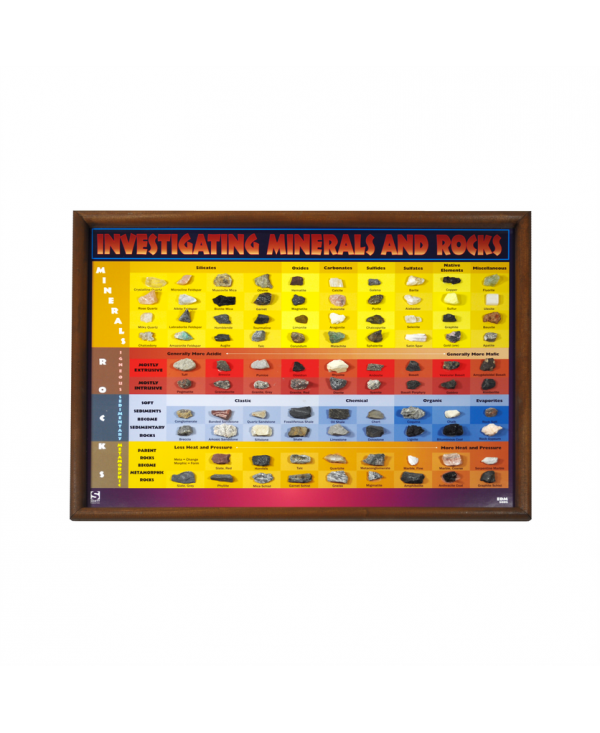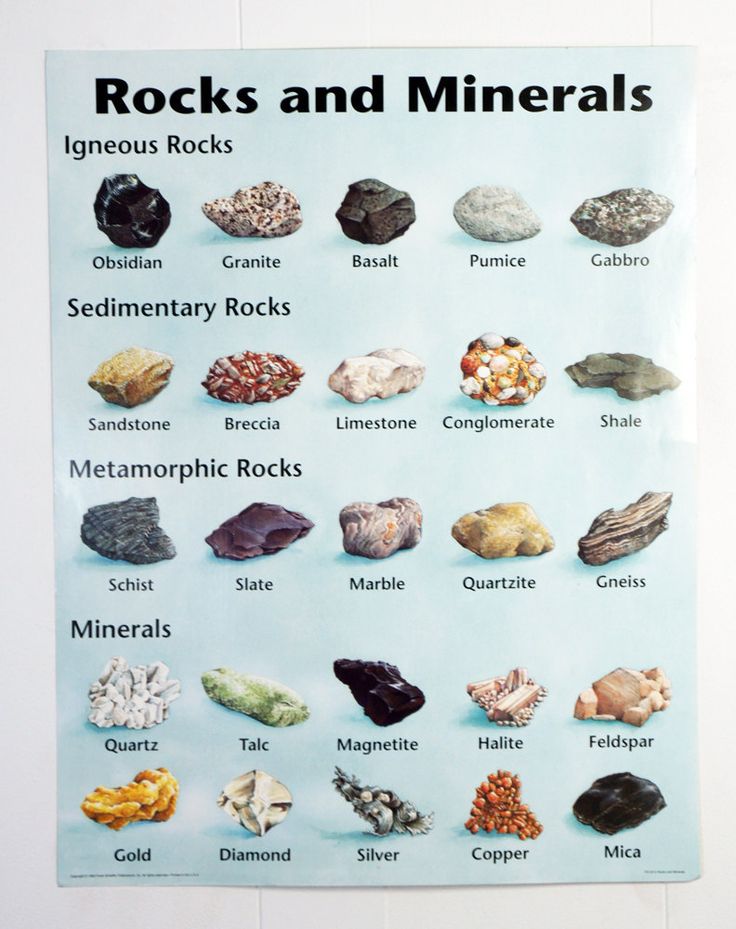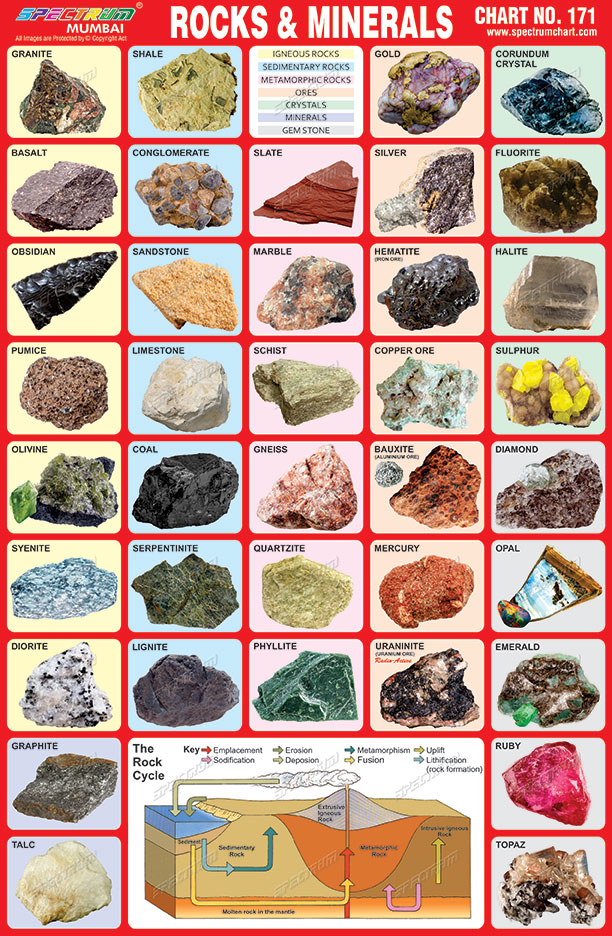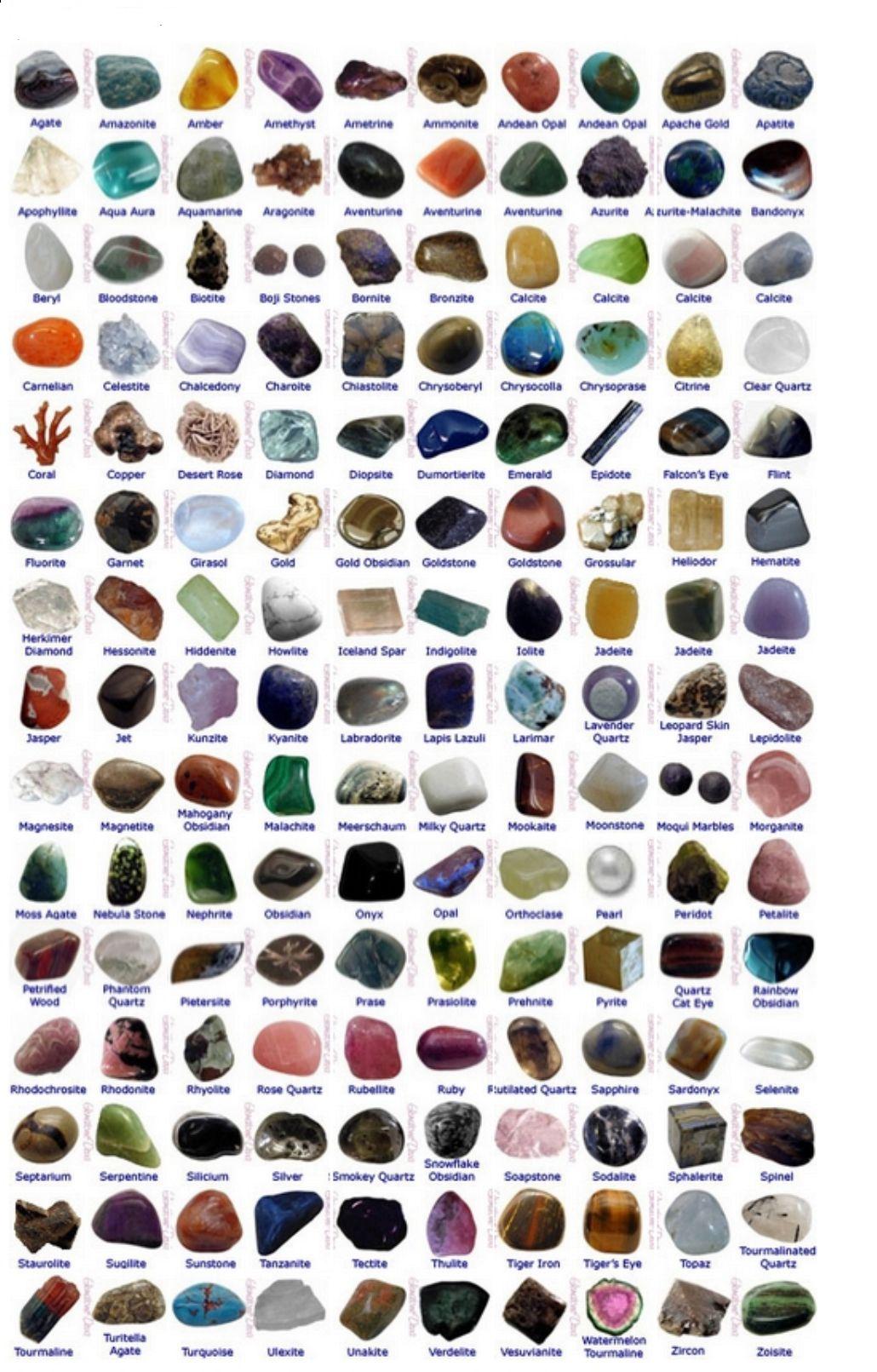
4th Grade Science, Middle School Science, Homeschool Science, Science
Figure 4.6.5 4.6. 5: Some minerals have different streaks than their visual color. Streak examines the color of a powdered mineral and can be seen when a mineral sample is scratched or scraped on an unglazed porcelain streak plate. A paper page in a field notebook may also be used for the streak of some minerals.

17 Best images about Rock and mineral identification on Pinterest
Rocks and minerals are important for learning about earth materials, structure, and systems. Studying these natural objects incorporates an understanding of earth science, chemistry, physics, and math. The learner can walk away with an understanding of crystal geometry, the ability to visualize 3-D objects, or knowing rates of crystallization.

Gemstone Identification Chart 6x9 Glossed Raw Gem Reference Etsy
5. Igneous Rock Identification Chart. To identify (name) igneous rocks, you determine two things about the rock: composition and texture. First determine composition, which is based on mineral content or color, if you can't see minerals. Then determine the texture of the rock and based on the two, identify the rock name.

HandsOn Science
California State Mineral (Gold) State legislation signed on April 23, 1965 designated native gold as California's official state mineral. At the signing ceremony Governor Edmund G. Brown Sr. said, "Selection of gold as our state mineral is acknowledgement of the intimate part it [gold] has played in the history of our people and of the fact that mining is a major California economic activity."

rocks and minerals.gif (755×973) Minerals and gemstones, Precious
The rocks and minerals are presented in alphabetical order with their assigned numbers shown to the left. Terminology can be referenced in the illustrated glossary of terms that is located at the end of the descriptive information. For more information about how to determine the name of a sample of unknown identity, refer to the mineral key or.

Rocks and Minerals Study Chart by
Flow charts or, dichotomous keys, are a great tool for identifying rocks and minerals when you are learning about the different sample properties. These charts include many rocks and minerals and will help you identify the samples in your Mini Me Geology kits and those commonly found in nature. If you have any questions about the flow charts.

minerals Gemstones chart, Gems and minerals, Minerals and gemstones
A rock is an aggregate of one or more types of minerals. Rocks do not have a unique crystal structure and may be formed from a variety of minerals in different sizes and shapes. Individual rocks will have different physical properties from one another because they are made up of different minerals. Rocks are classified as igneous, sedimentary.

Investigating Rocks and Minerals Chart
Rock and Mineral Kits. Rock, Mineral and Fossil Collections. Specimens for personal or classroom use. Flint, Chert, Jasper. Flint, Chert, and Jasper are types of chalcedony and names for microcrystalline quartz. Fluorescent Minerals. Fluorescent Minerals and rocks glow with spectacular colors under ultraviolet light.

rock chart Rock and mineral identification Pinterest Charts
Fill your container with water high enough to submerge the specimen. Place the container on the scale and 0 out the scale. Tie a string around the specimen. Hold the string and suspend the specimen in the water. Record the weight displayed on the scale. Divide the number from step 1 by the number in step 6.

Pin on p r e s e n t
The classification and description of the various chemically formed sedimentary rock types appears in the bottom section of the chart below. Photos of each rock type appear beneath the chart. Table 5.5.1 5.5. 1: Classification of Sedimentary Rocks. Step 1: Determine makeup.

Rocks and Minerals Chart
rock, in geology, naturally occurring and coherent aggregate of one or more minerals. Such aggregates constitute the basic unit of which the solid Earth is composed and typically form recognizable and mappable volumes. Rocks are commonly divided into three major classes according to the processes that resulted in their formation. These classes are (1) igneous rocks, which have solidified from.

Learning Lab Resources Rocks and Minerals Activities and Anchor Chart
4.3: Formation of Minerals. Solutions consist of ions or molecules, known as solutes, dissolved in a medium or solvent. In nature, this solvent is usually water. Many minerals can be dissolved in water, such as halite or table salt. The Na+1 and Cl-1 ions separate and disperse into the solution. Precipitation is the reverse process, in which.

Why Buy From Us? Gemstones chart, Crystal healing stones, Crystals
Welcome to the wondrous world of rocks and minerals! In this guide, we'll learn that rocks and minerals are formed and changed through some really fascinating processes on Earth. We'll also. what we want to know about rocks & minerals using this KWL chart. Later, come back and fill in the final column: what you learned about rocks.

Minerals And Gemstones, Minerals Crystals, Rocks And Minerals, Crystals
Add water to the cup and set it on the scale. Tare the scale so the reading is no 0.0g. Either tie your string/wire or bend your paperclip around the sample to hold it firmly. Hold the sample in the water with your holding device and then write down the second measurement. This is your wet weight (WW).

Rocks And Minerals Chart Identification
Run your fingers over the surface of the rock and see what you feel. Some rocks have textures that are unique enough that they can aid in identification. Most rocks will simply feel coarse or rough, but if you feel something different be sure to make a note of it. Some rocks may feel glassy, slippery, greasy, or gritty.

Rocks and Minerals Chart Grade 48
Check Out Mineral Rock Chart on ebay. Fill Your Cart With Color today!